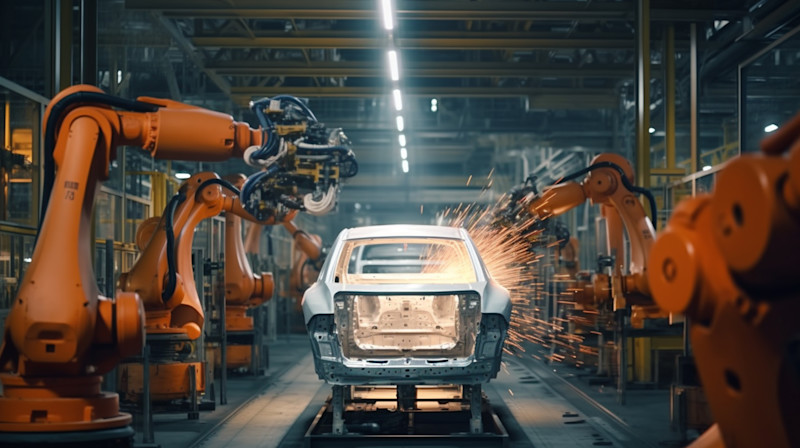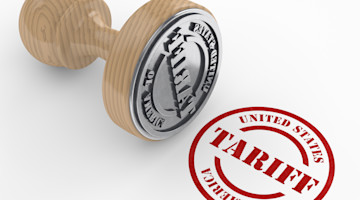Check in for the highlights, headlines, and hijinks that matter to manufacturing. These lean news items keep you updated on the latest developments.
TECHNOLOGY
Lightweight Is the Future of Transportation
Material science is the path to get there. The need for more powerful and efficient vehicles continues to grow as external factors such as population growth, fossil fuel supply, and global warming force change. Integrated computation materials engineering (ICME) will pave the way for new, more robust, lighter, and application-specific materials. ICME depends on several underlying technologies, such as artificial intelligence, high-performance computing, and simulations, to drive previously unsolvable solutions. Artificial intelligence has enabled the process to bypass trial-and-error design techniques. Simulations validate the form, material, and process of the specific applications. The advances in computing power drive both of these technologies. Movement is life, and lighter solutions enable freedom of movement.
Intelligence
Hydrogen Internal Combustion Engines: Porsche’s Sustainable Alternative
Thanks to Porsche’s strides in developing hydrogen internal combustion engines, the technology is now positioned as an alternative to gasoline engines, matching V-8 performance while reducing fuel consumption and emissions. The global hydrogen combustion engine market is projected to grow at a CAGR of 9.78%, reaching a value of $46.31 billion by 2033. Hydrogen internal combustion engine vehicles offer sustainability advantages over full-electric vehicles, emitting only water vapor and enabling production with renewable energy sources. They also provide faster refueling times and longer driving ranges. Porsche’s dedication to hydrogen technology demonstrates their commitment to innovation and sustainable mobility. This investment not only establishes them as a pioneer in sustainable transportation but also highlights hydrogen internal combustion engines as a cleaner and viable alternative to full-electric vehicles.
Smartforce
Navigating the EV Workforce
If consumer demand, government policies, and automaker commitments are driving the EV market, is there a workforce to take the wheel? Public-private partnerships are answering the call for a skilled talent pool to manufacture, maintain, and repair electric vehicles and their components. Here are some examples.
The American Association of Community Colleges will use an $8 million grant from the U.S. Department of Labor to create EV apprenticeships with partners such as Tesla, Panasonic, and Truckee Meadows Community College in Nevada.
In North Carolina, Siemens is partnering with Wake Technical Community College to offer a four-year apprenticeship that prepares high school and college students for EV careers in affiliation with its nearby e-mobility manufacturing hub.
Alongside 15 employer partners, the Michigan Economic Development Corp. announced the $350,000 Michigander EV Scholars Program to fund scholarships for up to 350 students, which marks the nation’s largest recruitment effort.
ADVOCACY
Finding Funding
After passing the bipartisan debt ceiling bill, Congress now turns its attention to the budget for fiscal year 2024 and funding the government within the spending limits set by the deal. That requires approving 12 appropriations bills by Oct. 1. Congress rarely meets that deadline. The last time it did was more that 25 years ago. Instead, usually, one or more short-term funding bills are approved to buy lawmakers more time to iron out a comprehensive package. This year, House Speaker Kevin McCarthy has vowed to pass all 12 spending bills. Manufacturers could be vulnerable as Congress looks for ways to cut spending programs and/or raise taxes to meet the debt ceiling requirements. AMT is working with several coalitions and organizations to defend important programs and incentives that strengthen the MT industry.
International
Hitch Your Cart to the Right Car
If you traveled by road in 1923, chances are you were still saying “giddy up” to the horse pulling your buggy. In the United States, only about 13% of the population had a car, and that number was much lower in Europe. Now, 100 years later, an estimated 1.5 billion cars travel the world’s roads. Manufacturing technology came along for the ride to the point that automotive manufacturing consumed the lion’s share of MT. Today’s evolving global transportation landscape is seeing significant changes impacting MT suppliers. Electric and autonomous vehicles, shared and micro-mobility, high-speed and hydrogen rail, smart infrastructure, urban air mobility, etc. all represent a shift that creates both challenges and opportunities – different components, sensors, batteries, lightweight materials, additive processes, connectivity and data analytics, and supply chain dynamics. If you stay agile and adaptive, embrace R&D, collaborate, investigate new processes, and be proactive, you can evolve, stay competitive, and thrive.
To read the rest of the Transportation Issue of MT Magazine, click .









